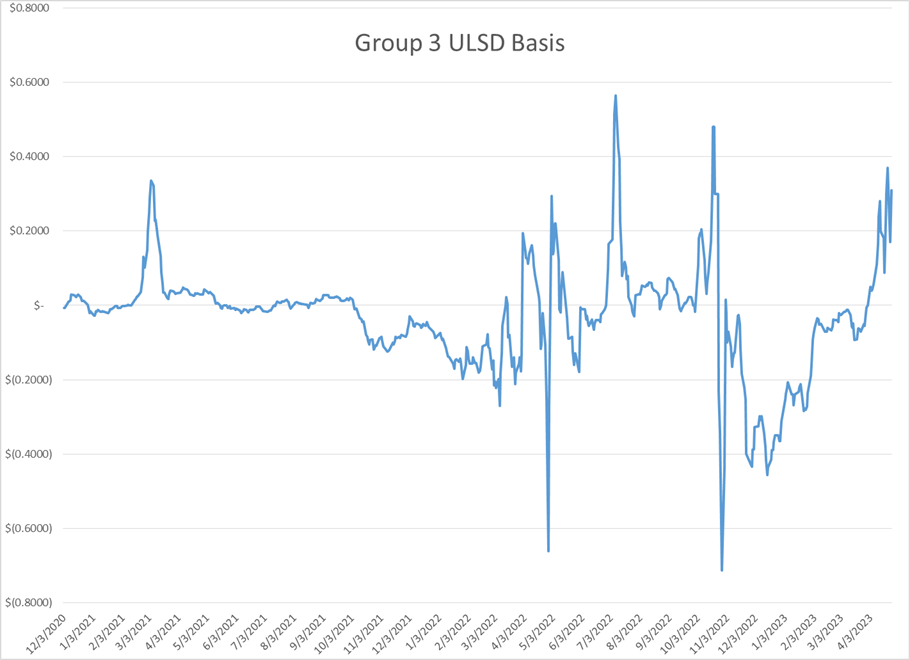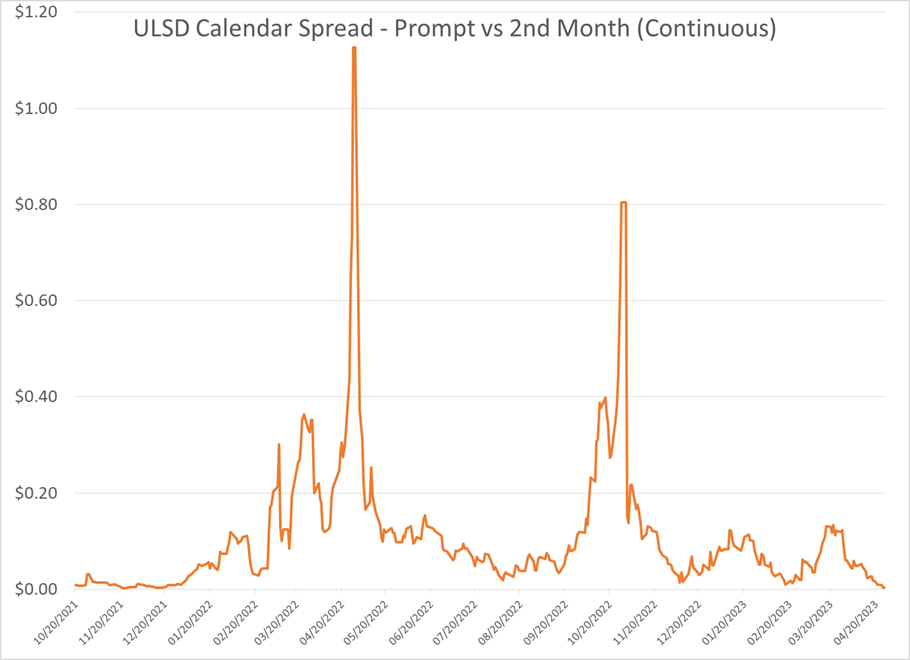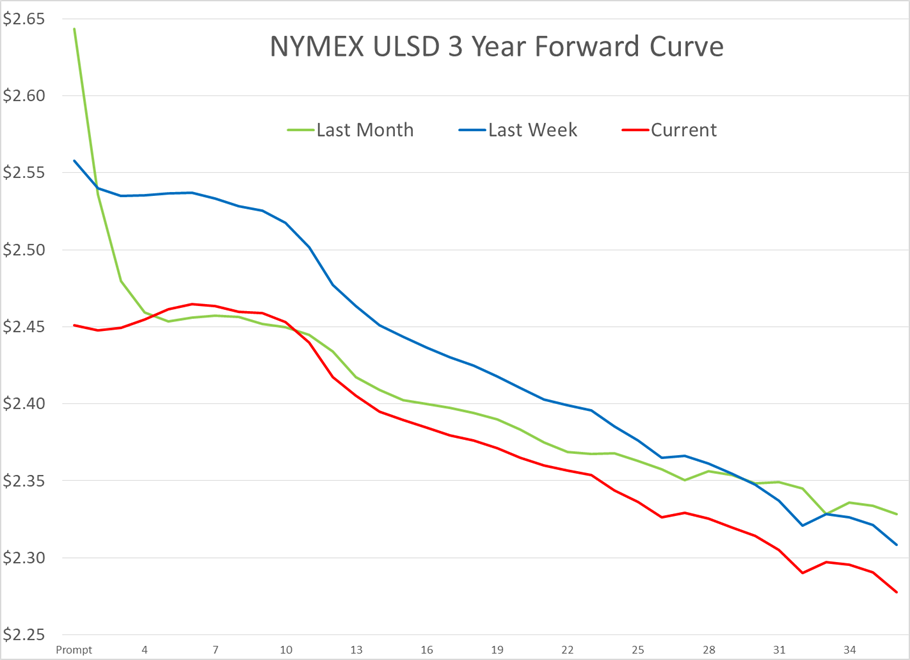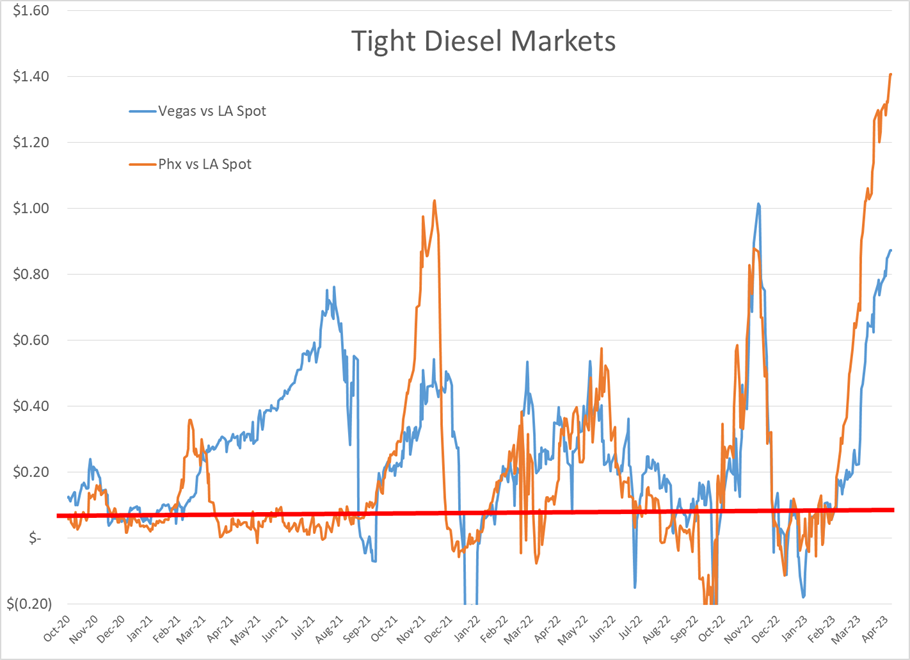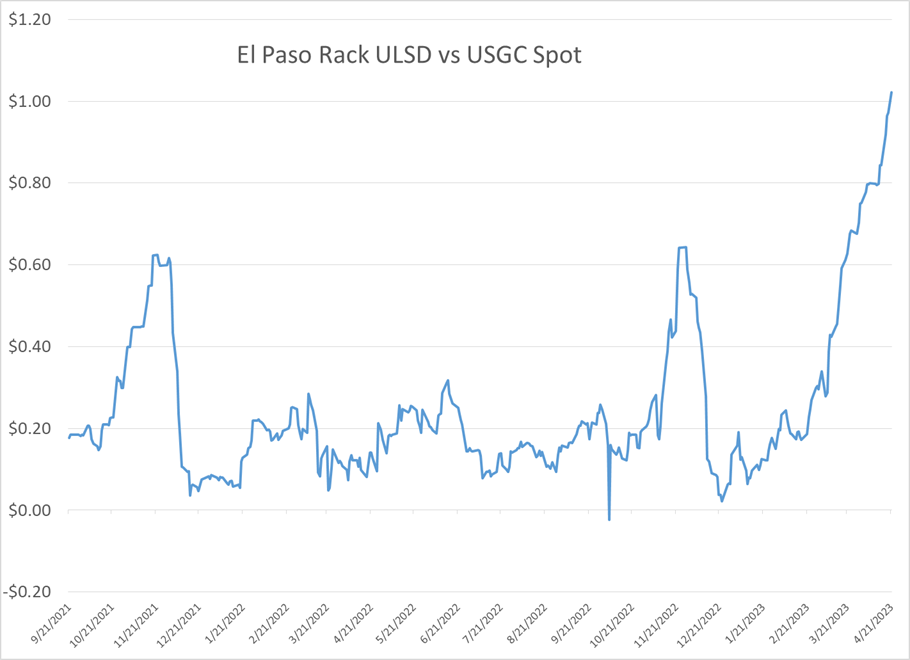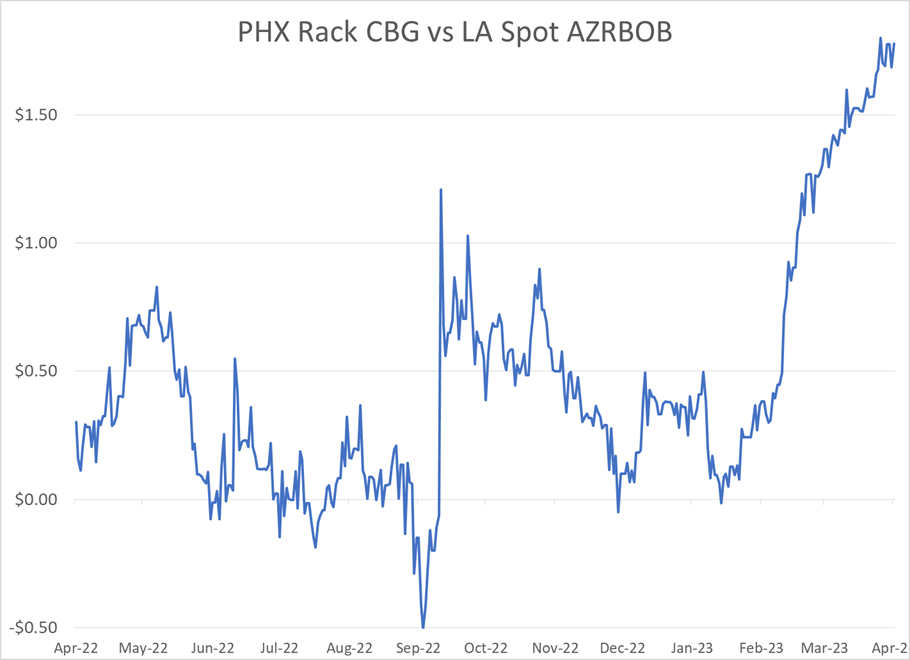Diesel Prices Hit Lowest Level Since January 2022 Amid Technical Support Failure, Shortages Persist in Southwest US

Diesel prices are trading at their lowest levels since the first week of January 2022 this morning after technical support around the $2.50 level failed to hold in Tuesday’s session, dragging the entire energy complex sharply lower. Tuesday’s US Consumer confidence report showed the lowest reading in 9 months, adding to the bearish sentiment for energy and equity markets.
Contango is back: The drop in prompt prices for distillates coincides with a collapse in the forward curve with prices for November and December ULSD currently trading 2 cents higher than May and June contracts. This time last year, prompt ULSD was trading at a premium of more than $2/gallon above 1 year forward values and today that premium has dropped to less than a penny/gallon as the world has finally figured out a work-around to the Russian supply conundrum.
Just don’t tell people in Arizona or New Mexico that diesel prices are cheap. Rack prices in those states continue to be offered north of $3.50/gallon as shortages across the Southwestern US persist. West Texas and Nevada are seeing similar price spikes as pipeline resupply options simply aren’t able to make up for the refinery downtime in the region, which has seen a few other smaller facilities convert to renewables production or shut down completely in recent years. Arizona’s low RVP CBG grade gasoline is going for $4.50/gallon in Phoenix, while spot prices for that boutique grade in LA are trading at $2.90.
While not nearly as extreme as what we’re seeing in the Southwest, values for diesel in the Group 3 market have been on a rollercoaster ride the past two weeks, with differentials fluctuating by 10-20 cents daily with premiums north of 40 cents and below 20 being talked on any given day. Here too, refiners trying to supplement supplies during maintenance, with fewer options now than in years past continues to be the underlying theme.
The Superior Wisconsin refinery is back operating under new ownership 5-years to the day after it blew up and forced a partial evacuation of that town. The refinery rebuild took 2 years longer and cost 3 times the original expected amount. Given the relatively small size and isolated location of that facility, don’t expect it to have any noticeable impact on spot prices in the region.
An explosion Tuesday at an asphalt facility in Lemont IL killed 1 worker and sent another to the hospital. That facility is adjacent to Citgo’s Lemont refinery, but refinery operations were not expected to be impacted. The terminal rack was temporarily taken offline following the explosion, but was brought back online by the afternoon.
The API reported an inventory decline of 6 million barrels for crude oil last week, even though more sales from the SPR continue, while gasoline stocks dropped by 1.9 million barrels and distillates increased by 1.7 million barrels. That report probably helps explain the relative strength for RBOB and WTI futures vs ULSD this morning. The EIA’s weekly report is due out at its normal time.
Click here to download a PDF of today's TACenergy Market Talk.
News & Views
View All
Energy Futures Are Caught Up In Headline Tug-O-War This Morning
Energy futures are caught up in headline tug-o-war this morning with Canadian oil production concerns and a positive US GDP report trying to push prices higher while sinking Chinese demand worries and Gaza ceasefire hopes are applying downward pressure. The latter two seem to be favored more so far this morning with WTI and Brent crude oil futures down ~45 cents per barrel, while gasoline and diesel prices are down about half a cent and two cents, respectively.
No news is good news? Chicago gasoline prices dropped nearly 30 cents yesterday, despite there not being any update on Exxon’s Joliet refinery after further damage was discovered Wednesday. Its tough to say if traders have realized the supply situation isn’t as bad as originally thought or if this historically volatile market is just being itself (aka ‘Chicago being Chicago’).
The rain isn’t letting up along the Texas Gulf Coast today and is forecasted to carry on through the weekend. While much of the greater Houston area is under flood watch, only two refineries are within the (more serious) flood warning area: Marathon’s Galveston Bay and Valero’s Texas City refineries. However, notification that more work is needed at Phillip’s 66 Borger refinery (up in the panhandle) is the only filing we’ve seen come through the TECQ, so far.
Premiums over the tariff on Colonial’s Line 1 (aka linespace value) returned to zero yesterday, and actually traded in the negatives, after its extended run of positive values atypical of this time of year. Line 1’s counterpart, Line 2, which carries distillates from Houston to Greensboro NC, has traded at a discount so far this year, due to the healthy, if not over-, supply of diesel along the eastern seaboard.
Click here to download a PDF of today's TACenergy Market Talk.

WTI And Brent Crude Oil Futures Are Trading ~$1.50 Per Barrel Lower In Pre-Market Trading
The across-the-board drawdown in national energy stockpiles, as reported by the Department of Energy yesterday, stoked bullish sentiment Wednesday and prompt month gasoline, diesel, and crude oil futures published gains on the day. Those gains are being given back this morning.
The surprise rate cut by the People’s Bank of China is being blamed for the selling we are seeing in energy markets this morning. While the interest rate drop in both short- and medium-term loans won’t likely affect energy prices outright, the concern lies in the overall economic health of the world’s second largest economy and crude oil consumer. Prompt month WTI and Brent crude oil futures are trading ~$1.50 per barrel lower in pre-market trading, gasoline and diesel are following suit, shaving off .0400-.0450 per gallon.
Chicagoland RBOB has maintained its 60-cent premium over New York prices through this morning and shows no sign of coming down any time soon. Quite the opposite in fact: the storm damage, which knocked Exxon Mobil’s Joliet refinery offline on 7/15, seems to be more extensive than initially thought, potentially extending the repair time and pushing back the expected return date.
There are three main refineries that feed the Chicago market, the impact from one of them shutting down abruptly can be seen in the charts derived from aforementioned data published by the DOE. Refinery throughput in PADD 2 dropped 183,000 barrels per day, driving gasoline stockpiles in the area down to a new 5-year seasonal low.
While it seems all is quiet on the Atlantic front (for now), America’s Refineryland is forecasted to receive non-stop rain and thunderstorms for the next four days. While it may not be as dramatic as a hurricane, flooding and power outages can shut down refineries, and cities for that matter, all the same, as we learned from Beryl.

